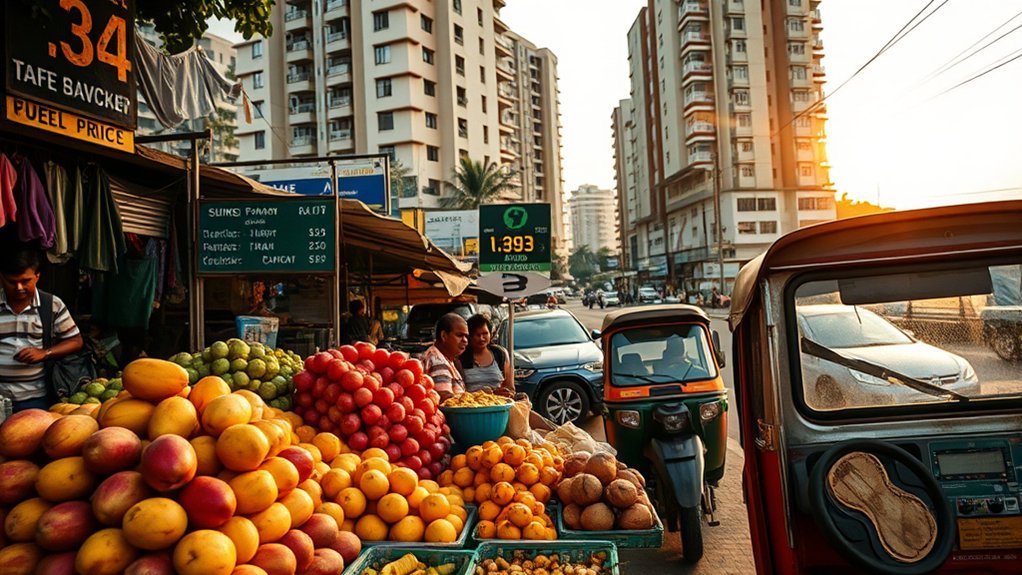You can live in Sri Lanka modestly for about $500–$800 a month as a single person outside Colombo, and expect higher costs in the capital where one‑bed rents run around $307. Groceries and utilities are cheap — basics like rice and milk cost under $1/kg and $1.50/L respectively — while monthly transport and internet are under $15 each. Private healthcare and international insurance add costs. Keep going and you’ll get city comparisons, budget breakdowns, and saving tips.
Living Expenses Overview and Monthly Budget

Although Sri Lanka’s exact costs vary by city and lifestyle, you can expect a single person’s non-rent monthly expenses to average about $467, driven by low food, transport, and utility prices that compare favorably to many regional peers. You’ll see groceries like milk at $1.48/L and rice at $0.72/kg keep basic Living costs minimal, while dining out remains affordable — $20.48 for a mid-range meal for two, $7.59 for a fast-food combo. Utility bills average $44.63 and internet (50+ Mbps) runs about $12.64, so digital access and essentials won’t erode your budget. Transport is cheap: single tickets $0.22 and a monthly pass $8.52, letting you move freely without high expense. When you evaluate Cost of Living across alternatives, Sri offers a clear path to financial breathing room; you can allocate savings toward mobility, entrepreneurship, or reinvention rather than just covering basics.
Housing Costs: Rent and Utilities Across Cities
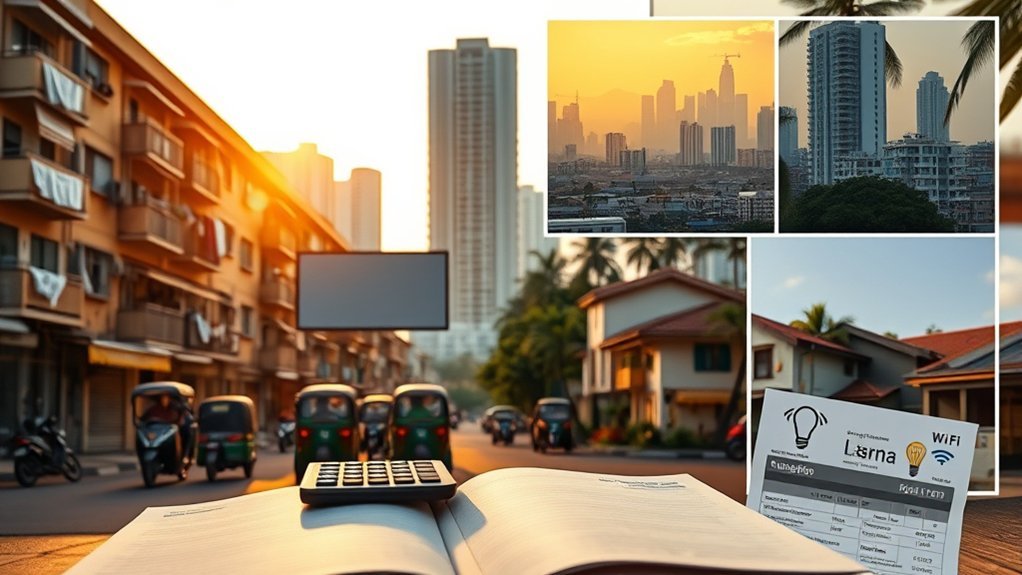
You’ll see big city-to-city differences in average rent — about $307 for a one-bedroom in central Colombo versus roughly $71 in Galle, with three-bedrooms in centers averaging around $587. Expect utilities to add about $26.20 per month for a single person and around $12.60 for reliable 50 Mbps internet, which keeps overall monthly costs manageable. Also compare furnished versus unfurnished listings carefully, since furnished units or cheaper one-bedrooms (around $146) can shift your monthly budget considerably.
Average Rent by City
Anyone looking at rental costs in Sri Lanka will see sharp differences between cities: Colombo averages about $306.88/month for a one-bedroom, Galle is far cheaper at $70.88, Matara sits near $126.02, and Kandy averages $137.83; add roughly $26.20/month for basic utilities per person to compare total monthly housing expenses. You can use this clear spread to plan where your money buys freedom: Colombo costs about 2–4 times more than regional cities, so choosing Galle or Matara stretches your budget and mobility. Focus on the average rent by city when weighing jobs, remote work, or relocation. Compare net disposable income after housing to decide which city best advances your goals for autonomy.
Utility Bills Breakdown
Start with roughly $26.20 a month for basic utilities per person — electricity, water, heating/cooling and garbage — and add about $12.64 if you want high-speed internet; that puts typical utility and connectivity costs near $38.84 monthly. This utility bills breakdown shows you can secure essential services cheaply compared with Western standards. If you’re renting a one-bedroom in Colombo (~$306.88) those monthly costs are a modest add-on; in Galle (~$70.88) they become a larger share of your budget. Even in a cheaper $146 one-bedroom, utilities remain stable, letting you plan reliably. For families in larger units (three-bedroom city center ~ $587), expect proportional increases but still manageable totals. Use these figures to budget toward financial independence.
Furnished Vs Unfurnished
When weighing furnished versus unfurnished one-bedroom rentals in Sri Lanka, the numbers make the trade-offs clear: in Colombo furnished units average $306.88 versus $248 unfurnished, while Matara and Galle drop to about $126.02 and $70.88 furnished respectively, and utilities remain a steady $26.20 per person regardless of fit-out. You’ll choose furnished vs unfurnished based on mobility, upfront savings, and control. Furnished saves setup time and aligns with short-term freedom; unfurnished cuts rent by roughly $58 in Colombo and rewards long-term commitment if you bring your own furniture. Add $12.60 for high-speed internet and $26.20 for utilities to both options. Compare total monthly costs, factor resale or portability of furniture, and pick the option that maximizes your independence.
Food and Grocery Prices: Eating In and Dining Out

You’ll find grocery staples in Sri Lanka are markedly cheaper than in many Western countries — for example, a loaf of bread is about $0.48 while a gallon of milk runs around $6.01. Dining out spans affordable options (an inexpensive meal with a drink ~ $3.63) to mid-range dinners for two (~ $20.48), with fast food combos near $7.90. Use those benchmarks to compare your likely monthly food spend if you plan to cook at home versus eat out.
Grocery Staples Cost Comparison
How much farther will your grocery budget stretch in Sri Lanka? grocery staples cost comparison shows clear savings: a loaf of bread runs about $0.50 versus $3.56 in the USA, and 1 liter of milk is roughly $1.70 compared to $3.97. Chicken fillets at $4.66 per kilogram are also generally cheaper than Western equivalents. These basic items cut your essentials bill dramatically, freeing money for travel, savings, or projects that increase your autonomy. You’ll move from surviving to choosing. Use local markets and seasonal buys to amplify gains — smaller shops often undercut supermarkets. This data-driven view lets you plan realistic monthly budgets and make empowered decisions about housing, transport, and lifestyle shifts in Sri Lanka.
Dining Out Price Ranges
One meal out in Sri Lanka will stretch your budget much farther than in the U.S.: a basic meal with a drink averages $3.63 versus $19.45 stateside, fast-food combos run about $7.90 versus $11.12, and a mid-range dinner for two is roughly $20.48—numbers that let you eat more often or reallocate dining funds to travel or savings. You’ll find dining out prices for Sri show consistent savings: a 0.5L beer is about $2.26, undercutting many Western bars. Practically, that means you can dine mid-range twice a week or choose more local spots and save substantially. If you want financial freedom, use these cost differentials to prioritize experiences, invest, or extend your time abroad while maintaining a comfortable social life.
Transportation and Commuting Expenses

If you commute regularly in Sri Lanka, expect low fares: a monthly public transit pass runs about $10.74 and single-trip local tickets cost roughly $0.22, making public transport the most economical choice for daily travel. For practical budgeting, note that transportation and commuting expenses stay low if you rely on buses and trains; those prices for Sri public transit let you preserve income and mobility. Taxis are a reasonable alternative for short hops—about $3.00 for a 5-mile downtown ride or roughly $3.03 for an 8 km trip—so you can mix modes without breaking free from tight budgets. If you drive, factor in gasoline at about $4.12 per gallon, which raises overall costs compared with mass transit. Compare scenarios: monthly pass plus occasional taxi often beats full car ownership. Plan routes, use passes, and prioritize public options to maximize independence and keep commuting predictable, affordable, and aligned with your goals.
Childcare, Education, and Schooling Costs
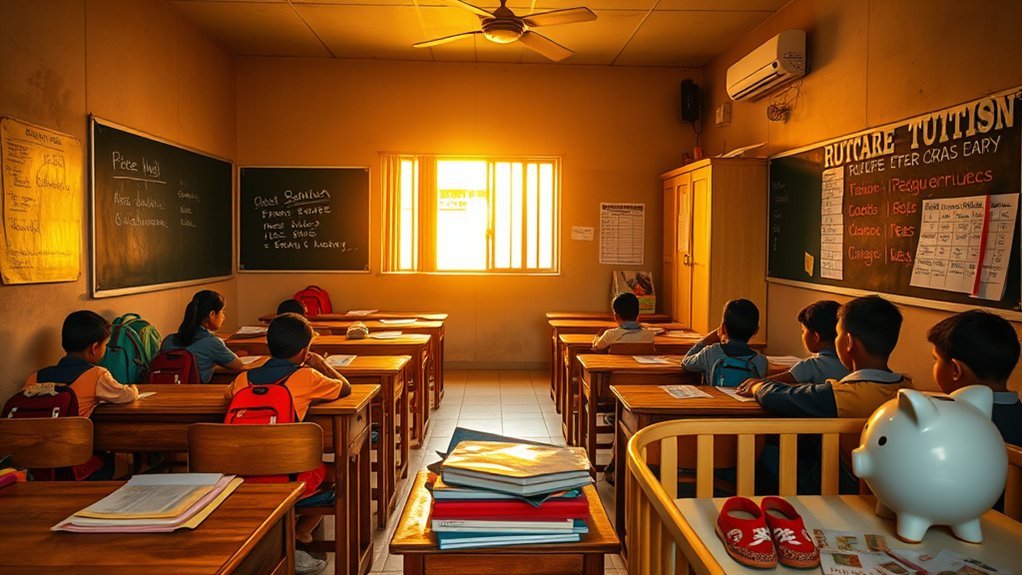
After accounting for predictable commuting costs, you’ll want to budget for childcare and schooling, where Sri Lanka is generally much cheaper than Western countries. Expect private preschool at roughly $33.87 per month per child — a stark contrast to ~ $1,387.27 in the U.S. If you prefer international schools, plan on $3,000–$15,000 per year depending on school and grade; many expats accept this premium for English-language curricula and a diverse environment. Public schooling is free, but you’ll still cover uniforms, books, and supplies, typically $100–$200 annually. Overall, childcare and education spending can be optimized: choose public schools plus modest extras to minimize costs, or select mid-range international options if you need continuity with global curricula. Use these figures to design a realistic budget aligned with your goals for freedom — whether that’s low-cost local integration or investing in internationally transferable schooling for your children.
Healthcare, Insurance, and Medical Expenses

Although public hospitals are available to expats, you’ll often find variable quality and long waits, so many choose private clinics in Colombo and other cities where English-speaking staff, quicker service, and higher standards are the norm; expect basic private consultations to run about $10–$20, while international health insurance is strongly recommended to cover private treatment and emergency evacuations that local services might not handle. You’ll compare public vs private on wait times, quality, and cost; private care buys speed and communication. Budgeting should include insurance premiums plus out-of-pocket visits and modest utilities (~$44.63/month in Colombo) as part of household cost modeling. Aim for plans covering evacuation and inpatient care.
| Service | Typical Cost | Notes |
|---|---|---|
| Private consultation | $10–$20 | English-speaking staff common |
| Insurance premium | Varies | Essential for evacuation coverage |
| Public hospital | Low/Free | Variable quality, long waits |
Choose insurance to maximize freedom and minimize financial risk while relying on private healthcare when you need timely, higher-standard care.
Salaries, Employment Opportunities, and Taxes
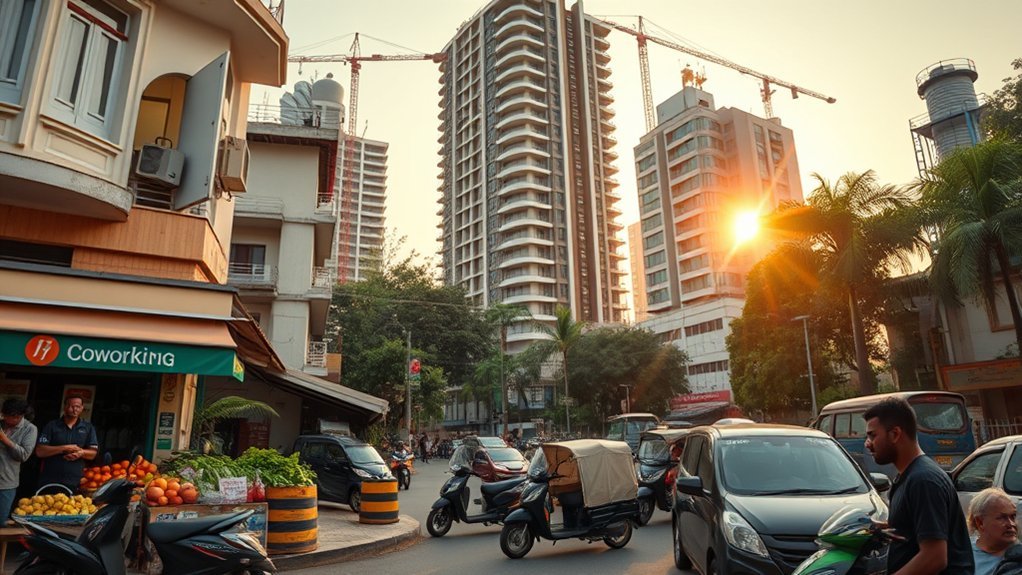
One key number to keep in mind is the average monthly salary—about LKR 90,100 (roughly US$285)—which helps explain why many locals struggle to cover living costs and why expats often work remotely for foreign employers to earn higher wages. You’ll find salaries in Sri Lanka are low by global standards, so if you want financial freedom here, remote work or foreign contracts change the equation. Employment opportunities for expats concentrate in IT and finance, fields needing specialized skills not widely available locally; that scarcity raises pay for qualified foreigners. Tax rules matter: residents pay tax on worldwide income, non-residents only on Sri Lanka-sourced income, and a revised personal income tax took effect for 2023/2024, altering effective rates and thresholds. Practically, you should calculate net pay after local taxes and compare remote foreign gross income to local offers. That data-driven comparison will guide decisions about relocation, job hunting, and achieving economic autonomy.
Where to Live: City-by-City Cost Comparisons
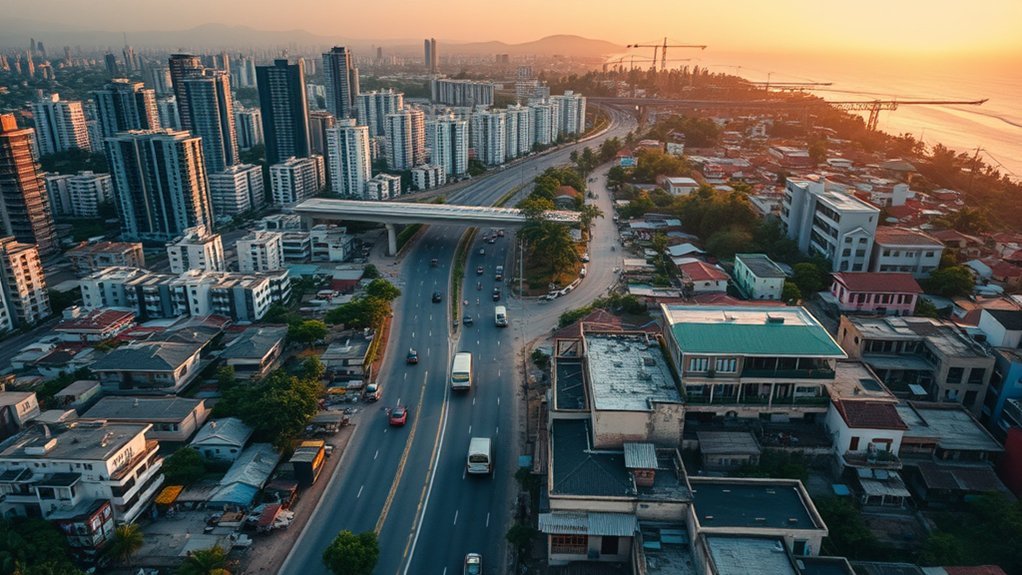
Where will your money stretch furthest? You’ll weigh trade-offs: Colombo’s city-center one-bedroom averages $306.88 — highest on the list — offering jobs and amenities if you need urban access. Galle is far cheaper at $70.88, giving coastal charm and value among the best places to live for budget-focused seekers. Matara ($126.02) and Kandy ($137.83) sit mid-range, balancing quieter life or cultural scenery with reasonable rents. Arugam Bay draws surfers and nomads; rent data’s spotty but its lifestyle can justify relocation for freedom-seekers.
| City | Avg. 1BR Rent (USD) |
|---|---|
| Colombo | 306.88 |
| Galle | 70.88 |
| Matara | 126.02 |
Use this comparative snapshot to choose: prioritize services and higher costs in Colombo, or pick coastal or inland towns for lower rents and greater personal liberty among Sri Lanka’s best places to live.
Practical Tips for Saving Money in Sri Lanka
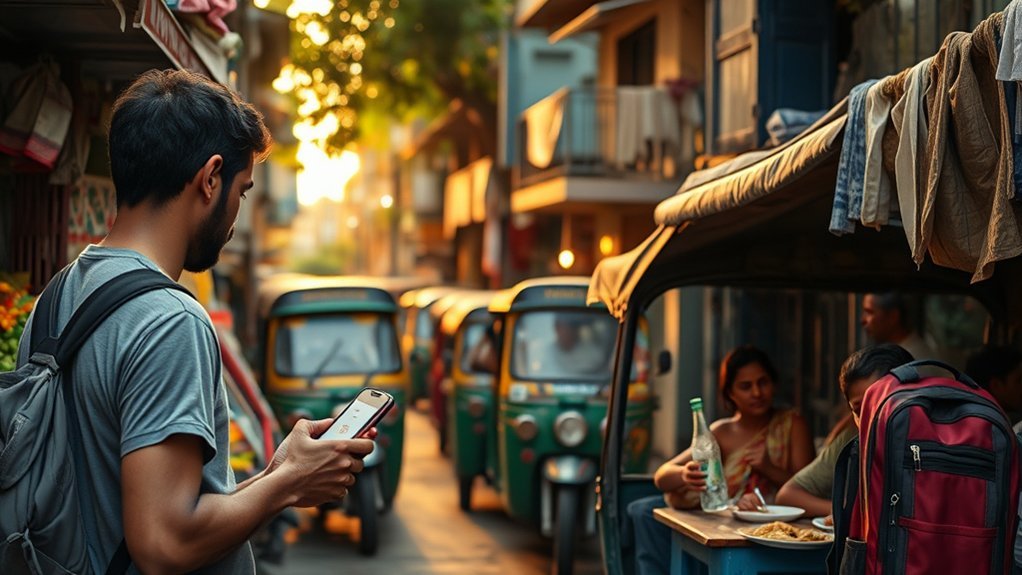
Having compared city rents, you can now focus on concrete ways to stretch your budget in Sri Lanka. Prioritize local markets: basic items like milk (1L) at ~$1.70 and bread (0.5 kg) at ~$0.50 are cheaper than imported goods, so buy fresh, seasonal produce and cook. Use public transport—single tickets ~ $0.22, monthly passes ~$8.52—to cut commuting costs versus taxis or private cars. Choose less touristy neighborhoods: a city-center 1‑bed averages $248, while cheaper options run about $146; moving slightly outward can free up cash for experiences. Eat at local eateries where a typical lunch costs roughly $3.54 instead of pricier international restaurants. Reduce entertainment spending by joining community activities and visiting free attractions to deepen cultural ties and save money. These practical, comparative choices help you design a liberated lifestyle while living in Sri Lanka, keeping costs low without sacrificing quality.
Frequently Asked Questions
How Much Money Is Needed to Live in Sri Lanka?
You’d need roughly $550–$800 monthly to live comfortably in Sri Lanka; use Budget Planning to compare $467 basic costs, $248 central rent, utilities and internet, then adapt spending for freedom, savings, and local wage gaps.
Can an American Live in Sri Lanka?
Yes — you can live in Sri Lanka; juxtaposing low costs with rich culture, you’ll handle Cultural Adjustment using data: lower expenses, affordable transport, shared English, and practical choices that let you gain freedom while adapting intentionally.
What Is the Cost of Living in Sri Lanka in US Dollars?
About $565 monthly on average; a single person spends ~$467 before rent, average after-tax salary ~$249. Considering Currency Exchange, you’ll compare affordable groceries, $248 city rent, low utilities, and cheaper dining versus global costs.
Is Sri Lanka a Cheap Place to Live?
Absolutely — you’ll find Sri Lanka cheap: Cost Comparison shows living expenses roughly 49% lower than the UK, monthly basics around $467 before rent, so you’ll save money, gain mobility, and pursue a freer lifestyle.
Conclusion
You’ll be shocked — Sri Lanka can feel like a bargain or a splurge depending on choices: Colombo might devour half your salary while Kandy or Galle nibble modestly, and rural towns practically bribe you with low rents. With average monthly budgets ranging from ~$300 (frugal) to $1,200+ (comfortable in Colombo), use data — rent, food, transport, schools — to compare options and cut costs. Plan, compare, and you’ll control expenses, not the other way around.

